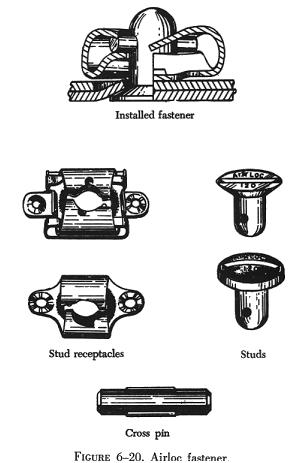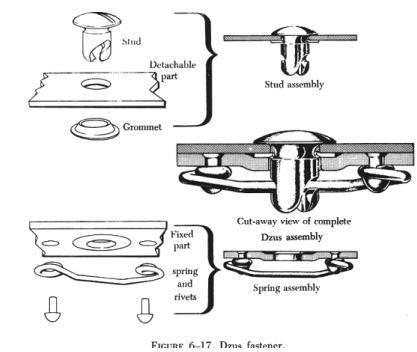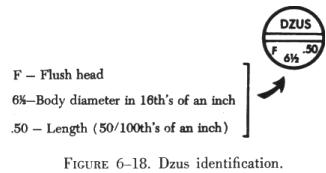 |
The Airloc fastener shown in figure 6-20 consists of three parts, a
stud, a cross pin, and a stud receptacle. The studs are manufactured from
steel and case hardened to prevent excessive wear. The stud hole is reamed
for a press fit of the cross pin.
The total amount of material thickness to be secured with the Airloc
fastener must be known before the correct length of stud can be selected
for installation. The total thickness of material that each stud will satisfactorily
lock together is stamped on the head of the stud in thousandths of an inch
(0.040, 0.070, 0.190, etc.). Studs are manufactured in three head styles;
flush, oval, and wing.
The cross pin (figure 6-20) is manufactured from chrome-vanadium steel
and heat treated to provide maximum strength, wear, and holding power.
It should never be used the second time; once removed from the stud, it
should be replaced with a new pin.
Receptacles for Airloc fasteners are manufactured in two types, rigid
and floating. Sizes are classified by number - No. 2, No. 5, and No. 7.
They are also classified by the center-to-center distance between the rivet
holes of the receptacle: No. 2, 3/4 inch; No. 5, 1 inch; and No. 7, 1 3/8
inch. Receptacles are fabricated from high carbon, heat treated steel.
An upper wing assures ejection of the stud when unlocked and enables the
cross pin to be held in a locked position between the upper wing, cam,
stop, and wing detent, regardless of the tension to which the receptacle
is subjected. |



